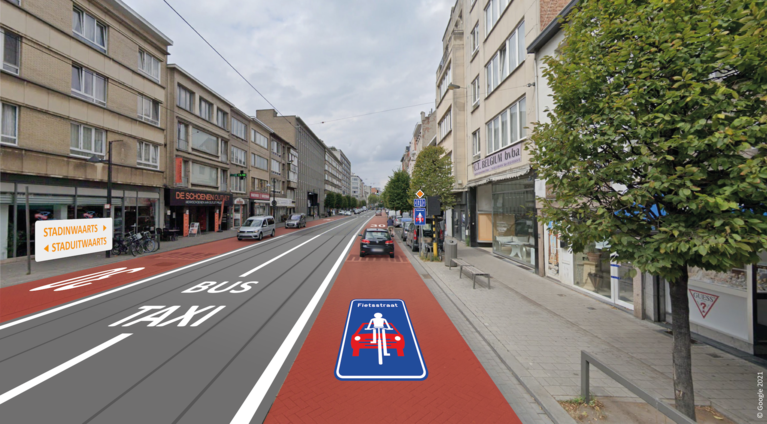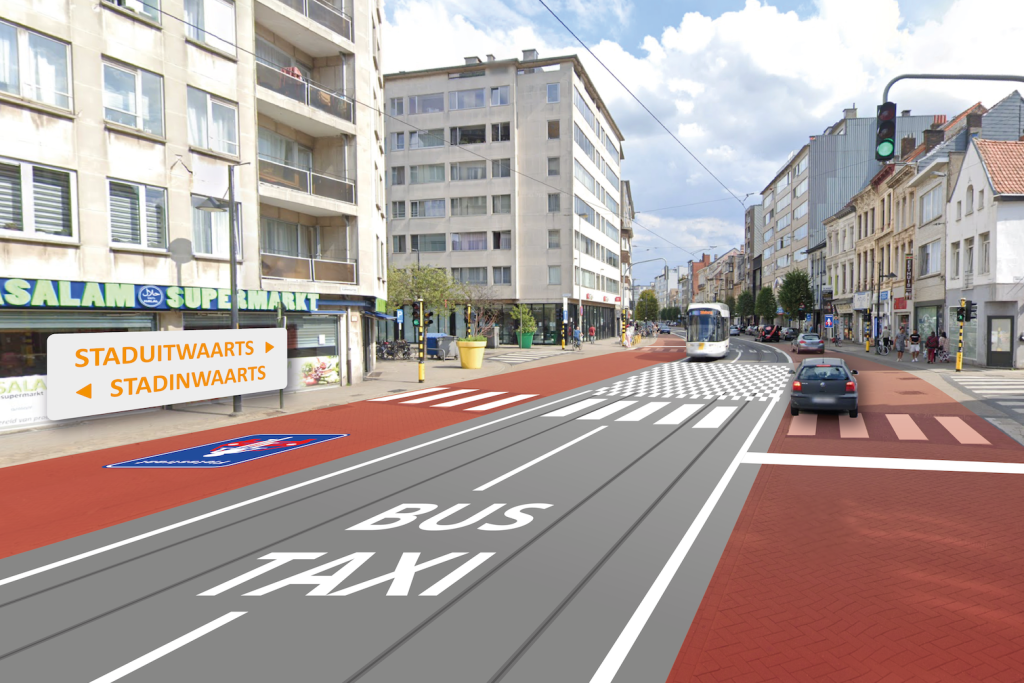Turnhoutsebaan will be introduced as a bike street as soon as possible in March, possibly in April. The Roads and Traffic Agency (AWV) provided an explanation this week about the timing of those short-term plans and also stated that a design study will be conducted in 2022 for the final redesign of the street.
The AWV wants to introduce Turnhoutsebaan’s Bike Street as soon as possible. This is what the agency provided this week. For street bikes, the cyclist is the most important user of the road. Cyclists are allowed to use the entire lane. Automated traffic is allowed but is a guest. So cars and trucks are not allowed to overtake cyclists. The top speed of 30 km/h applies to street bikes, and also accelerators, for example. These rules will apply to the part from Carnotstraat to Stenenbrug. For the part from Gravinstraat to Singel and between Stenenbrug and Singel, only the new top speed of 30 km/h will be offered.
Concretely, in a first step, the AWV will carry out a series of urgent repairs to the existing road surface and bed of buses and trams. These works will be scheduled from January, depending on weather conditions.
Once the works are completed, the necessary traffic signs and road markings will be applied to convert Turnhoutsebaan into a bike street. For example, the Bike Street sign will be placed after each intersection and the lanes will be red across the entire length and width. During this procedure, all other signs are also instantly renewed. These works will take about two weeks and are very sensitive to the weather. “As a result, it probably won’t be possible to implement before March,” AWV spokesman Giles van Goethe said. “But once the works are completed, the Bike Street will be in effect.”

Photo: AWV

Photo: AWV
The AWV says street bike compliance will be enforced immediately. Initially, a portable camera will be used for this. Only speeding violations can be registered. The mobile camera will be deployed at different locations on the track so that problem parts can also be immediately mapped. “Not long after that, a permanent app installation will be installed. This installation depicts three aspects: speed, red-light cancellation, and overtaking across the tram bed.
To prevent double parking, five additional loading and unloading areas are created. An additional traffic light will be installed with an intersection near Laar.
The introduction of the bicycle street is a temporary measure pending a final redevelopment of the street. Steps will also be taken in this regard next year. The AWV will begin in 2022 with a design study for the redevelopment of the track. This study is being carried out in collaboration with the City of Antwerp and De Lynn and will be linked to the participation process. Final redesign work will begin three to four years later.

“Total coffee specialist. Hardcore reader. Incurable music scholar. Web guru. Freelance troublemaker. Problem solver. Travel trailblazer.”







More Stories
Bitcoin price rises after new jobs data from US
European stock markets open higher | beursduivel.be
Russia’s oil imports to China decline